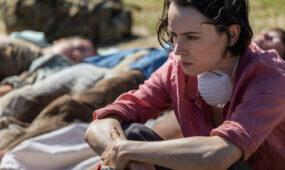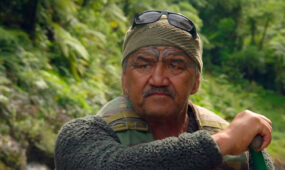Film review: Son of Saul
Film & TV
Son of Saul is set in the Auschwitz-Birkenau extermination camp in late 1944, when the German war effort is collapsing.

The Sonderkommando, themselves Jews who are chosen to keep the ovens hot and the floors clean after their fellow prisoners have been killed, work frantically in an effort to stay alive a little longer.
Saul is a member of this group and the camera follows him wherever he goes, either from behind or from his shoulder, which gives the film a limited but effective perspective.
Geza Rohrig, a writer and poet who lives in New York and has never acted before, plays Saul with crazed intensity. We see what Saul sees, including dead bodies being dragged away after the gas chambers are opened, but we see it in the periphery, just the way someone hardened by months of torture would.
“Frenzy and the lack of information constitute an integral part of the human experience within the camp,” writer-director Laszlo Nemes has said in an interview with Fairfax.
The film is highly disturbing and Saul’s desperate search for a rabbi who can help give a child a proper burial seems too extreme. Why does that one death of a child matter more than all the others? It’s as if Saul believes it is his own child and he is doomed to keep searching for a rabbi.

Get InReview in your inbox – free each Saturday. Local arts and culture – covered.
Thanks for signing up to the InReview newsletter.
Son of Saul has already won a Golden Globe and the Grand Prix at Cannes, and looks like to take out an Oscar for best foreign-language film. And for good reason: it is a remarkable first feature by Nemes and a Holocaust film like no other.
Support local arts journalism
Your support will help us continue the important work of InReview in publishing free professional journalism that celebrates, interrogates and amplifies arts and culture in South Australia.
Donate Here





Comments
Show comments Hide comments